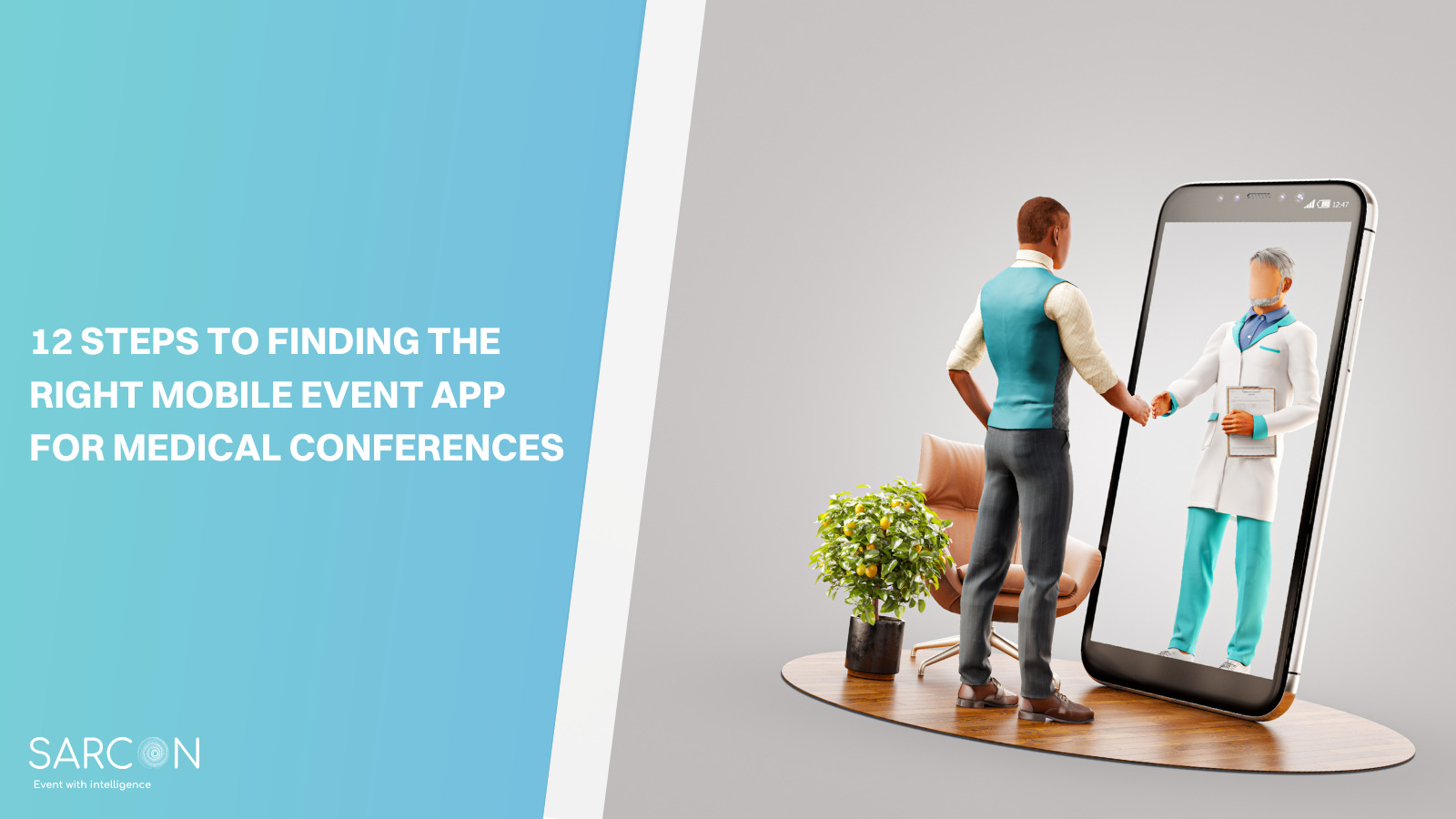The landscape of Medical CME Conferences is rapidly evolving, and the integration of virtual and in-person experiences is at the forefront of this transformation. In this comprehensive guide, we’ll delve into the exciting developments in hybrid medical conferences, highlighting their potential to revolutionize the way medical professionals share knowledge, collaborate, and learn.
Integrating Virtual and In-Person Experiences
The concept of hybrid medical conferences, which combines the benefits of in-person and virtual events, is gaining momentum in the medical community. This innovative approach aims to create a seamless blend of traditional conferences and online engagement. Let’s explore this promising future and its impact on the medical industry.
Advantages of Hybrid CME Conferences
Hybrid CME conferences offer a range of benefits, making them an attractive option for both organizers and attendees.
1. Enhanced Accessibility
In the fast-paced world of medicine, the ability to connect with colleagues and experts globally is invaluable. Hybrid conferences break down geographical barriers by incorporating virtual components. This ensures that healthcare professionals from across the globe can participate without the need for extensive travel, reducing costs and environmental impact. As a result, these events attract a diverse and international audience, fostering interdisciplinary collaboration and knowledge exchange.
2. Cost Savings
Attending medical conferences can be costly, considering expenses such as travel, accommodation, and registration fees. Hybrid conferences provide a cost-effective solution, allowing attendees to save on these expenses while still benefiting from high-quality content. For organizers, the reduced need for physical venues and related logistics leads to substantial cost savings.
3. Wider Audience Reach
One of the most significant advantages of hybrid medical conferences is their ability to draw a larger and more diverse audience. This diversity enriches discussions and encourages professionals from different medical specialties to interact, potentially leading to innovative cross-disciplinary collaborations.
4. Flexible Scheduling
With hybrid conferences, attendees can choose to engage in real-time sessions or access recordings at their convenience. This flexibility is particularly valuable for healthcare professionals with busy schedules. It enables them to tailor their participation to their specific needs, ensuring that they don’t miss out on critical content.
5. Reduced Environmental Impact
In an era where environmental consciousness is paramount, hybrid conferences contribute to sustainability by reducing the carbon footprint associated with traditional in-person events. Fewer attendees traveling means lower emissions and a more eco-friendly approach to knowledge sharing in the medical field.
Implementing Virtual Components
To successfully integrate virtual elements into CME conferences, organizers need to consider a few critical factors:
1. Robust Technology
The cornerstone of a successful hybrid conference is reliable technology. Organizers must ensure high-quality audio and video, interactive platforms, and strong technical support to create a seamless experience for both in-person and virtual attendees. Technical glitches can disrupt the flow of the event, so having backup plans and responsive support is essential.
2. Engaging Content
Virtual attendees must remain engaged throughout the conference. To achieve this, presenters must adapt their content to the virtual format, utilizing engaging visuals, interactive features, and real-time audience interaction. This not only maintains interest but also encourages active participation.
3. Interactivity
Hybrid Medical conferences should facilitate engagement, not only between participants and presenters but also among the attendees themselves. Incorporating live Q&A sessions, chat forums, and networking opportunities can bridge the gap between the in-person and virtual experience, creating a sense of community and shared learning.
4. Data Security
Medical conferences often involve the exchange of sensitive patient information. Organizers must prioritize data security to protect patient privacy. Employing end-to-end encryption and robust cybersecurity measures ensures that the confidentiality of medical data is maintained.
5. Accessibility
Ensuring that virtual content is accessible to all participants, including those with disabilities, is a fundamental requirement. Compliance with accessibility standards ensures that no one is left behind in the pursuit of medical knowledge.
Challenges and Solutions
While hybrid medical conferences offer immense promise, they come with their share of challenges. Here are some common hurdles and strategies to overcome them:
1. Technology Issues
Technical glitches can disrupt virtual components. To counter this, provide clear instructions for participants, conduct rehearsals to identify and address potential issues, and have a backup plan in place. Technical support should be readily available to troubleshoot any problems that may arise during the event.
2. Ensuring Engagement
Virtual attendees may struggle to stay engaged during lengthy conferences. To combat this, organizers should introduce interactivity into the virtual components. This can include live Q&A sessions, polls, and breakout rooms for smaller group discussions. Keeping participants actively involved and connected is vital to the success of hybrid conferences.
3. Networking Limitations
Building connections can be more challenging in virtual settings. To facilitate networking, organizers can employ AI matchmaking tools that pair attendees with similar interests or expertise. Additionally, online forums and discussion boards can provide virtual attendees with a platform to connect, share insights, and build professional relationships.
4. Data Privacy Concerns
In medical conferences, the exchange of sensitive patient information is not uncommon. Protecting this data is paramount. Organizers must employ end-to-end encryption and robust cybersecurity measures to safeguard patient information from potential breaches.
5. Balancing Time Zones
Hybrid conferences often attract participants from different time zones. To accommodate this diversity, organizers should carefully plan event schedules, considering the convenience of attendees in various regions. This may involve offering multiple time slots for key sessions or recording presentations for later viewing.
The Future Landscape
The future of hybrid medical conferences is promising, as it blends the best of both worlds. We can expect to see more innovation and creativity in event planning, including:
- Virtual Reality (VR) Integration: Virtual reality will provide immersive experiences, allowing attendees to interact in 3D virtual spaces. This technology will revolutionize how medical professionals engage with content and with each other.
- AI-Powered Content Recommendations: Artificial intelligence will play a significant role in suggesting relevant sessions, connecting like-minded professionals, and personalizing the conference experience. Attendees will receive tailored content recommendations based on their interests and expertise.
- Enhanced Remote Participation: Advancements in remote surgical procedures will enable medical professionals to actively participate in surgeries from around the world, expanding their learning opportunities and contributing to global healthcare collaboration.
- Global Collaboration: Increased access to medical conferences will foster global collaborations, accelerating the pace of groundbreaking medical discoveries and innovations.
- Customizable Learning Paths: Attendees will be able to tailor their conference experience by selecting sessions and topics most relevant to their interests and professional goals. This customization will provide a highly personalized and valuable experience.
Conclusion
The future of hybrid medical conferences is bright and exciting. The integration of virtual and in-person experiences promises to redefine how medical professionals collaborate and share knowledge. As technology advances and organizers adapt, we can look forward to more inclusive, accessible, and innovative events that will shape the future of medical conferences.
FAQs
Q: Are hybrid medical conferences the future of the industry?
Absolutely. Hybrid conferences offer unparalleled accessibility and a wider reach, making them an integral part of the future of medical events. The flexibility they offer, combined with a reduced environmental impact, ensures their significance in the healthcare industry.
Q: What technology is required for a successful hybrid conference?
High-quality audio and video, interactive and strong technical support platforms like Sarcon are essential for a seamless experience. To succeed, organizers must prioritize technology and anticipate potential challenges.
Q: How are data privacy concerns addressed in hybrid conferences?
Data privacy in hybrid conferences is maintained through end-to-end encryption and robust cybersecurity measures. These safeguards ensure that sensitive patient information remains confidential and secure.
Q: What’s the primary benefit of hybrid conferences for attendees?
The primary benefit for attendees is the flexibility to choose between attending sessions in real-time or accessing recordings at their convenience. This flexibility accommodates busy schedules and allows professionals to tailor their learning experience.



